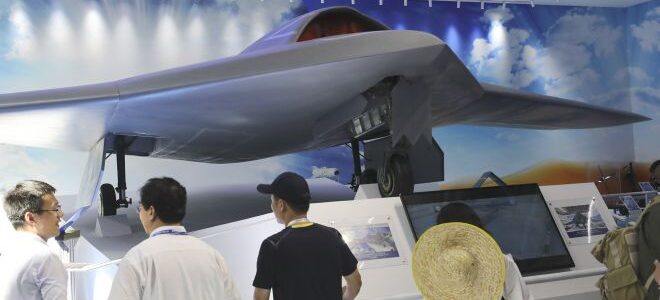Img Credit: Yahoo News Singapore
China continues to impress with their latest innovation, new stealth combat drones known as Tian Ying (CH-7). It featured at the air show in Zhuhai, a biannual event that showcases China’s latest developments in military and civilian aviation. There were several Chinese state-owned arms companies also displaying their drones. It appears China is investing heavily in unmanned aircraft with plans to develop drones capable of flying from one of its future aircraft carriers. Could this be a role for the CH-7 to fulfil?
According to China’s Ministry of Industry and Information Technology, more than 350 private Chinese firms are now capable of making unmanned aerial, surface or ground vehicles.
Military vehicles and robots date as far back as WWI with small, remote-controlled and tracked, disposable explosive devices. WWII saw even more innovative designs with the Soviet Army developing full-sized remote-controlled tanks between 1930 and 1940. Even the Brits had a hand in remote controlled tanks with their Matilda MK2 Infantry tank, the ‘Black Prince’.
While nothing compares to modern day military vehicles and autonomous systems, our history is filled with incredible engineering feats. With so many different autonomous military vehicles and systems, we’re only focusing on a few of the standouts.
It’s always only a matter of time before countries explore each other’s successes (or failures) and this is no different. Combat drones, powered by advanced technology like artificial intelligence, are the new ‘wingmen’ to Chinese carrier-based fighter jets. Essentially, it appears to be an attempt to compete with the prowess of the United States’ unmanned aerial vehicle (UAV) programs. Some believe that it’s China’s version of the US Navy’s Unmanned Carrier Launched Airborne Surveillance and Strike (UCLASS).
According to Shi Wen, chief engineer and designer of China’s Caihong (CH), or Rainbow UAV series, “The joint operations of manned military aircraft, like fighter jets, and UAVs is the drone’s future. We are making efforts to promote artificial intelligence (AI) for UAVs to allow manned aircraft to co-pilot UAVs.”





Recent Comments